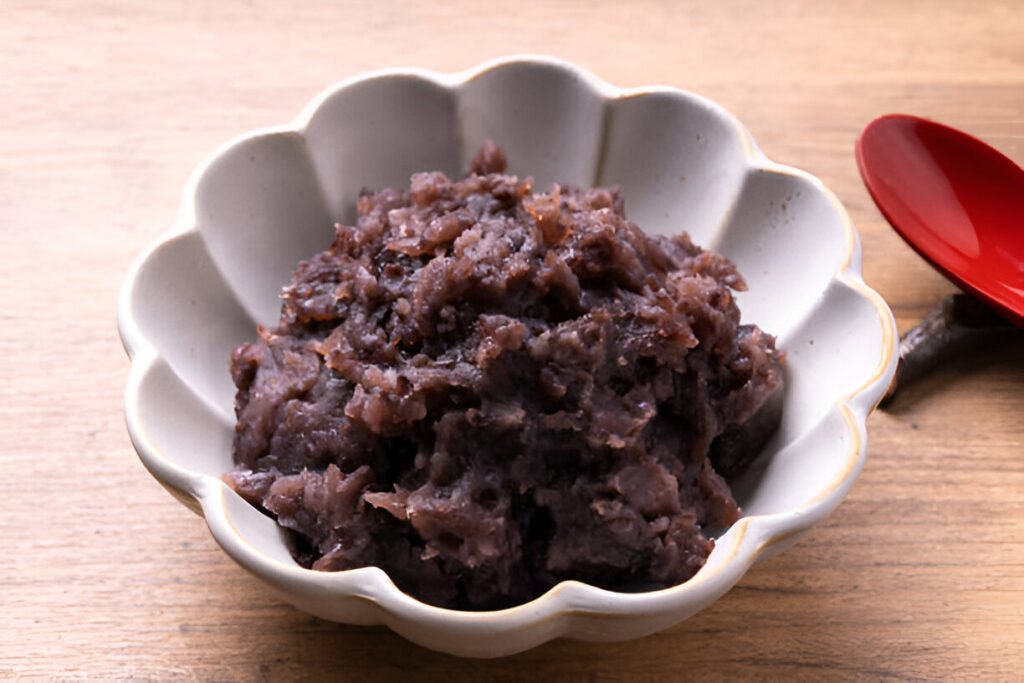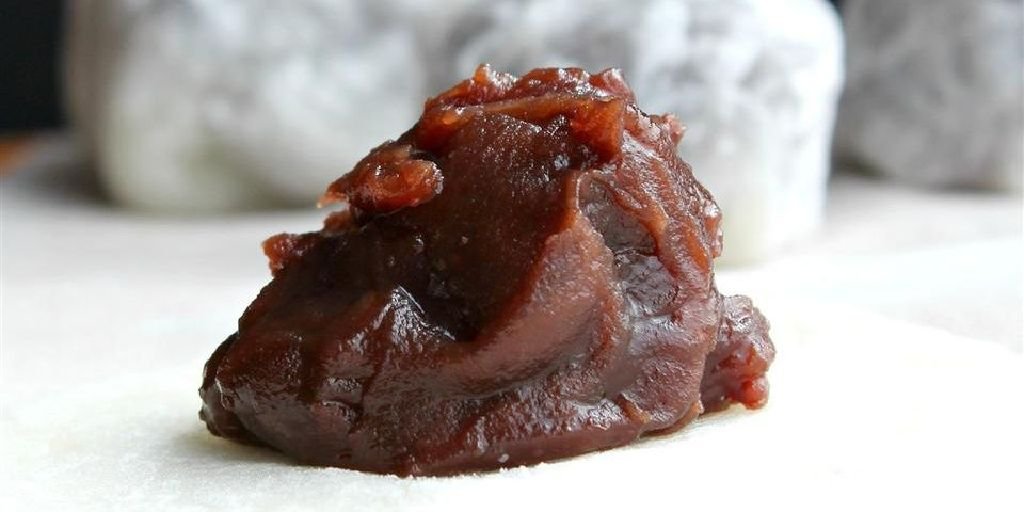What Does Red Bean Paste Taste Like? Sweet, Savory, or Something Else?
Adzuki beans are the key ingredient in red bean paste. They have been loved in Asian desserts for centuries. I first encountered it in a cozy little bakery during a trip abroad, and I was instantly intrigued. I was surprised by its smooth texture and rich, earthy flavor. I wondered why it became a staple in so many dishes.
If you’re curious about the taste of red bean paste, you’re not alone. Is it sweet, savory, or somewhere in between? Can it be an acquired taste, or does it offer a delightful surprise to first-time tasters? Let’s dive into the nuances of this unique ingredient.
By the end of this post, you’ll know what red bean paste tastes like. You’ll also see how it fits into both desserts and savory dishes. Whether you’re a first-time taster or a long-time fan, this guide will help you appreciate this underrated flavor.
The Basics of Red Bean Paste

Asian desserts often feature red bean paste. This sweet and savory filling comes from adzuki beans. We boil and mash the beans to create the paste, often sweetening them with sugar and occasionally adding a pinch of salt to balance the flavor.
There are two main varieties of red bean paste: smooth and chunky. Smooth red bean paste is finely mashed for a silky texture. In contrast, chunky red bean paste keeps some bean texture, giving it a rustic, hearty feel. Both versions serve as fillings in various treats, from buns to pastries.
In addition to adzuki beans, red bean paste often contains ingredients like sugar, salt, and sometimes vegetable oil for smoothness. Some recipes add rice flour or agar-agar. This helps make the paste firmer, based on what you want to achieve. This adaptable paste can range from subtly sweet to more robust, depending on the recipe used.
Red Bean Paste: What Does It Taste Like?
Red bean paste [1] is prevalent in many treats, especially in Asian desserts. Even though it’s made from adzuki beans, which are just regular beans and not sweet on their own, sugar is added while making the paste.
This makes the paste sweet. So, when you try a dessert with red bean paste, you’ll notice a sweet taste. It’s a unique flavor, different from chocolates or fruit fillings, and many people like it.
“Grains and beans are negative aspects of the Mediterranean Diet that are countered by the large amounts of olive-oil polyphenols, large amounts of red-wine polyphenols, and fish.”
– Steven Gundry, American Physician
The extra sweetness mixes nicely with the bean’s flavors. This makes a taste that’s both unique and tasty.
| Related Articles: What To Serve With Ham And Bean Soup? |
Does It Taste Like Regular Beans?
Red bean paste comes from adzuki beans, but it doesn’t taste like the beans you’d add to salads or soups.
The transformation process and added sweetness mask the typical savory and earthy taste associated with beans. Instead, it takes on a milder, slightly nutty flavor profile.
This unique taste sets it apart, making it more suitable for desserts than savory dishes.
| Check out: Butter Beans Vs. Great Northern Beans |
What’s The Texture Like?
Red bean paste has a distinct texture that differs from whole beans. It’s smooth and thick, much like a dense jam or spread. It feels consistent in the mouth, without any big lumps or chunks when you taste it.
Some paste versions may have small bits of beans, adding a slight crunch. Most, however, are creamy and soft. This texture makes them easy to spread or shape in different desserts.
How Does It Compare To Chocolate Or Fruit Fillings?
Red bean paste offers a unique taste experience that stands apart from the familiar flavors of chocolate or fruit fillings.
Chocolate offers richness, shifting between bittersweet and milky flavors. Fruit fillings add a tangy freshness. In contrast, red bean paste finds its own unique place.
“Red bean paste is where earthy whispers meet sweet melodies, crafting a symphony for the palate.”
– Eat Gap Restaurant & Food Advice
Its sweetness is less intense than some chocolates or fruit fillings. Instead, it provides a mellow, slightly nutty undertone, a bridge between the intense flavors of chocolate and the vibrant tastes of fruits.
The bean origin gives it depth, but its preparation ensures it remains distinctly sweet. This balance makes it versatile, allowing it to shine in a wide range of desserts without overshadowing other ingredients.
Red bean paste adds a unique touch to desserts. While chocolate and fruit fillings are popular, red bean paste offers a delightful and elegant flavor experience.
What’s the Best Way To Experience Its Taste?
- Start with Popular Desserts:
- Detail: Begin your red bean journey with widely loved treats like red bean buns or mochi. These desserts taste balanced. They offer a gentle introduction to red bean paste flavor.
- Pair with Tea or Coffee:
- Detail: The subtle sweetness of red bean paste is complemented wonderfully by a hot cup of tea or coffee. The beverages enhance the taste experience, making it more palatable for first-timers.
- Opt for Freshly Made Products:
- Detail: Like most foods, the freshness of a dessert can significantly influence its taste. Opt for items made the same day, ensuring you get the red bean paste’s most authentic and vibrant flavor.
- Try Different Textures:
- Detail: Red bean paste comes in various textures. Some are smooth and creamy, while others have a grainier feel. Sampling offers a full taste experience. It helps you find what you like.
- Combine with Other Flavors:
- Detail: If you’re wary about trying red bean paste on its own, select desserts that combine it with other flavors. Red bean ice cream usually includes vanilla or other flavors. This creates a layered taste that newcomers may find more appealing.
- Engage in Group Sampling:
- Detail: Share the experience with friends or family. Everyone can share their thoughts. This makes tasting more fun and less scary. It also allows for discussions and comparisons, enriching the experience.
FAQs on Red Bean Paste Taste Like
Why is my red bean paste bitter?
Overcooking the adzuki beans or failing to properly rinse and soak them before cooking could result in a bitter red bean paste. Also, burnt sugar or caramelization can add a bitter taste when sweetening. Follow cooking guidelines closely and use fresh ingredients to achieve the right sweetness.
Is Korean red bean paste healthy?
Korean red bean paste, known as patjuk, is relatively healthy. Adzuki beans, rich in protein, fiber, and essential nutrients, form the basis of this paste.
The sugar in the paste adds calories, so it’s best to use it in moderation for a balanced diet.
In Conclusion
Red bean paste is a versatile ingredient in the vast world of cooking.
This Asian delicacy, made from adzuki beans, transcends its humble origins to offer a sweet, subtly nutty, and unique taste.
It’s neither as overt as chocolate nor as tangy as fruit fillings, but it carves a niche in the hearts of those who try it.
Red bean paste blends old flavors with modern tastes. It shows that surprising ingredients can create delightful experiences.
References:
- https://www.allrecipes.com/recipe/238507/anko-sweet-red-bean-paste/







